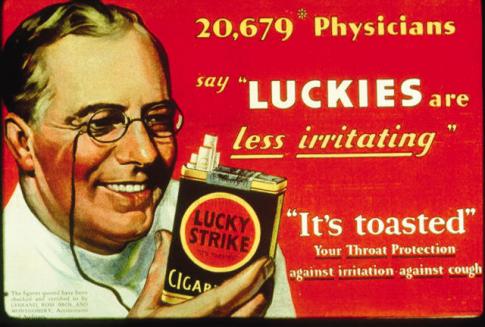*The image above was created by Silberio77. This image is unchanged. Original Image.*
PLEASE NOTE: ALL CITATIONS ARE IN MLA 7 FORMAT. THE PREFERRED FORMAT IS MLA 8. SEE OWL PURDUE FOR PROPER CITATIONS.
Books
Ewen, Stuart. Captains of Consciousness Advertising and the Social Roots of the Consumer Culture. 25th ed. New York: BasicBooks, 2001.
Captains of Consciousness offers a historical look at the origins of the advertising industry and consumer society at the turn of the twentieth century. -Amazon
Ewen, Stuart, and Elizabeth Ewen. Channels of Desire: Mass Images and the Shaping of American Consciousness. 2nd ed. Minneapolis: University of Minnesota Press, 1992.
In five essays, the authors thoughtfully explore the social, cultural, and historical context of mass-produced images. -Amazon
Fox, Stephen. The Mirror Makers: A History of American Advertising and Its Creators. New York: Morrow, 1984.
A general history of American advertising which lists the media buyers, copywriters and agencies who developed American advertising from 1840 to the 1980s. The author examines advertising philosophies, investigates the arts of print buying, copywriting, market reasearch and branding. He looks at the evolution of the retail market place and the magazines, radio and TV that makes advertising a powerful social force. -Amazon
Frank, Thomas. The Conquest of Cool: Business Culture, Counterculture, and the Rise of Hip Consumerism. Chicago: University of Chicago Press, 1997.
While the youth counterculture remains the most evocative and best-remembered symbol of the cultural ferment of the 1960s, the revolution that shook American business during those boom years has gone largely unremarked. In this fascinating and revealing study, Thomas Frank shows how the youthful revolutionaries were joined—and even anticipated —by such unlikely allies as the advertising industry and the men’s clothing business. -Amazon
Goodrum, Charles, and Helen Dalrymple. Advertising in America: The First 200 Years. New York: Harry N. Abrams, 1990.
Their well-organized, if simplistic, book is an encyclopedia of the print advertising image, with a skeletal timeline delineating influences, styles and techniques, later fleshed out with analyses of why the advertising industry has flourished. The availability of inexpensive paper and the advent of trademarks seem to have served as major catalysts, spawning ad agencies, with their artists and copywriters, and eventually today’s corps of market-research mavens. -Amazon
Hilton, Conrad. Be My Guest. New York: Prentice Hall Press, 1987.
Ranging from the days when he literally couldn’t spare a dime, to his building a round-the-world hotel enterprise, Conrad Hilton’s story becomes a saga of American big business through depression, war, and prosperity. -Book Cover
Ogilvy, David. Confessions of an Advertising Man . Harpenden: Southbank Publishing, 2013.
O’Reilly, Terry and Mike Tennant. The Age of Persuasion: How Marketing Ate Our Culture. Berkeley, CA: Counterpoint, 2009.
From the early players to the Mad Men of the 1960s and beyond, The Age of Persuasion provides an entertaining—and eye-opening—look at a world driven by marketing.
Packard, Vance. The Hidden Persuaders. 1957. New York: Pocket Books, 1980.
The Hidden Persuaders was the first book to expose the hidden world of “motivation research,” the psychological technique that advertisers use to probe our minds in order to control our actions as consumers. Through analysis of products, political campaigns and television programs of the 1950s, Packard shows how the insidious manipulation practices that have come to dominate today’s corporate-driven world began. -Amazon
Sivulka, Juliann. Ad Women: How They Impact What We Need, Want, and Buy. Amherst, N.Y.: Prometheus Books, 2009.
Ad Women tells the story of how women have risen to the top of the advertising profession. Anyone who has followed the rise of Mad Men’s Peggy Olson from secretary to copywriter will be interested in the story of her real-life counterparts. -Amazon
Tungate, Mark. Adland: A Global History of Advertising. London: Kogan Page, 2007.
Author and journalist Mark Tungate examines key developments in advertising, from print, radio, and television advertisements to the opportunities afforded by digital media — podcasting, text messaging, and interactive campaigns. Adland focuses on key players in the industry and features exclusive interviews with leading names in international advertising, including Tom Bernadin, CEO of Leo Burnett; Jean-Marie Dru, President and CEO of TBWA Worldwide; and John Hegarty, Chairman of BartleBogleHegarty -Amazon
Articles
Doll, J. (2012 April 9). “Reviewing the “Mad Men” world by someone who was there.” The Wire. Lexis Nexis. Web. 13 July 2016.
Elliott, S. (2008, Jun 23). “Madison Avenue likes what it sees in the mirror.” New York Times Retrieved from http://ezproxy.concordia-ny.edu:2048/docview/433876794?accountid=10247.
Giges, Nancy. “Ad Women: How Agency Life Really Was.” Advertising Age 79.25 (2008): C8-C14. Academic Search Complete. Web. 28 July 2016.
Keener, J. W. “Marketing’s Job For The 1960’s.” Journal Of Marketing 24.3 (1960): 1-6. Business Source Premier. Web. 1 Sept. 2016.
Miracle, Gordon E. “An Historical Analysis To Explain The Evolution Of Advertising Agency Services.” Journal Of Advertising 6.3 (1977): 25-10. Business Source Premier. Web. 1 Sept. 2016.
Pollay, R. W. “Promises, Promises: Self-Regulation of US Cigarette Broadcast Advertising in the 1960s .” Tobacco control, vol. 3, no. 2, 1994., pp. 134-144.
Websites
Christopher, R. (2013, May 19). “Former “Mad Man” discusses career in advertising.” The Day. http://www.theday.com/article/20140519/ENT02/305199993
Ryan, Ted. “The Making of ‘I’d Like to Buy the World a Coke.” Coca-Cola Company. January 1, 2012. http://www.coca-colacompany.com/stories/coke-lore-hilltop-story
